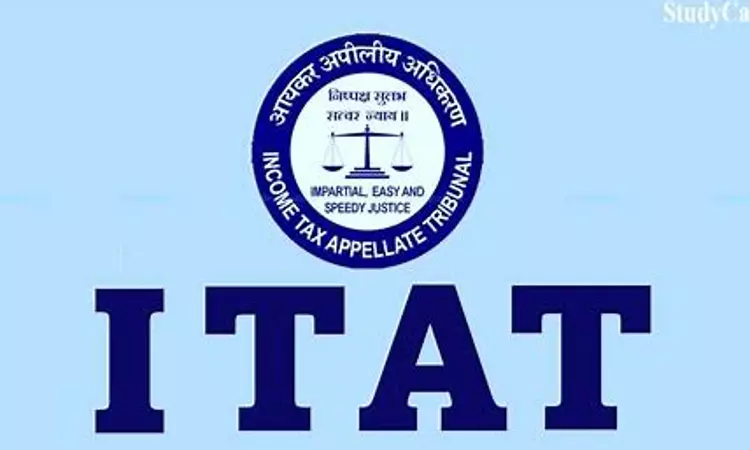Stock-In-Trade Sold During Relevant Year Should Only Be Considered For Purpose Of Computing Capital Gains: Hyderabad ITAT
Pankaj Bajpai
9 Oct 2024 6:30 AM
The Hyderabad ITAT held that the capital gain arising on account of conversion of capital asset into stock-in-trade should be proportionately computed by considering the stock-in-trade sold by the assessee and not the entire extent of land converted by the assessee. The Tribunal held so, after finding that the assessee has sold part of the stock-in-trade for the current financial...
The Hyderabad ITAT held that the capital gain arising on account of conversion of capital asset into stock-in-trade should be proportionately computed by considering the stock-in-trade sold by the assessee and not the entire extent of land converted by the assessee.
The Tribunal held so, after finding that the assessee has sold part of the stock-in-trade for the current financial year and remaining stock-in-trade is still held as closing stock.
Referring to Section 45(2) of Income tax Act, the Bench of Manjunatha G. (Accountant Member) and K. Narasimha Chary (Judicial Member) observed that “the profits or gains arising from the transfer by way of conversion of capital asset to stock-in-trade shall be chargeable to income tax as income of the previous year in which such stock-in-trade is sold or otherwise transferred by the assessee”.
Facts of the case
The appellant/ assessee, an individual and director of a firm Kyori Infrastrucutre Pvt Ltd (KIPL) & Kyori Oremin Ltd (KOL), filed its return admitting income of Rs.1,04,84,170/-, which was later revised at Rs.91,36,620/-. Upon verification of return during assessment, the AO found that opening stock was shown as Rs.17,98,60,568/-, whereas the closing stock was Nil. The assessee explained this discrepancy by stating that the capital asset owned by him was converted into stock-in-trade, and because of this, opening stock has been increased. The assessee further contended that as per the provisions of section 45(2), when capital asset is converted into stock-in-trade, the resultant capital gain is taxable in the year in which the asset is sold. Since only part of the land is sold during the relevant financial year, capital gains were not offered to tax.
The AO observed that, as per section 45(2), profits & gains arising from transfer by way of conversion by the owner of the capital asset to stock in trade of a business carried on by him shall be chargeable to income tax as income of previous year in which such stock-in-trade is sold or otherwise transferred and for the purpose of section 45(2), the fair market value of the asset on the date of conversion shall be deemed to be the value of the consideration received or accruing as a result of transfer of capital asset. Since the appellant has converted the capital asset into stock-in-trade and also sold part of stock-in-trade, capital gain arising out of conversion of capital asset into stock-in-trade should be taxed when stock-in-trade is sold. After obtaining fair market value of land as on date of conversion, the AO computed capital gain.
Observation of the Tribunal
As regards the first issue of addition towards Short-Term Capital Gain and Long-Term Capital Gain on account of conversion of capital asset into stock-in-trade, the Bench found that the appellant has not disclosed any closing stock.
Had it been the case of assessee that he has converted capital asset into stock-in-trade in the previous financial year, the Bench clarified that the value of closing stock should find place in the return of income filed for the earlier A.Y.
Therefore, to this extent, the Bench stated that the reasons given by AO to assess the capital gain in pursuant to conversion of capital asset into stock-in-trade as per section 45(2) for the A.Y in question, is in accordance with law.
The Bench explained that for the purpose of section 48, the full value of the consideration arising as a result of transfer is fair market value of the property as on the date of such conversion.
Since the fair market value cannot be the SRO value for the purpose of determination of stamp duty, the Bench directed the AO to determine the correct fair market value of the property either by referring the matter to the valuation cell to ascertain the correct fair market value of the property or obtain certain evidences including instance of registration of properties during that period and find out the correct fair market value of the property.
In the present case, the Bench found that the AO has computed the Long-Term Capital Gain and Short-Term Capital Gain by taking into total extent of land converted by the appellant even though the appellant has sold only part of stock-in-trade.
Therefore, the ITAT directed the AO to ascertain the extent of stock-in-trade sold by the assessee and based on such extent, compute proportionate capital gain liable for taxation.
In so far as the computation of closing stock by adopting fair market value of the land as per SRO rate as on the date of conversion is concerned, the ITAT directed the AO to recompute the value of closing stock after obtaining correct fair market value of the land as on the date of conversion.
Hence, the ITAT remanded the matter to the AO for consideration afresh.
Counsel for Appellant/ Assessee: P Murali Mohan Rao
Counsel for Respondent/ Revenue: TH Vijaya Lakshmi
Case Title: Ishoo Narang versus DCIT
Case Number: ITA No.319/Hyd/2022

